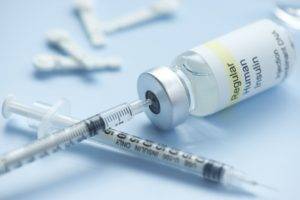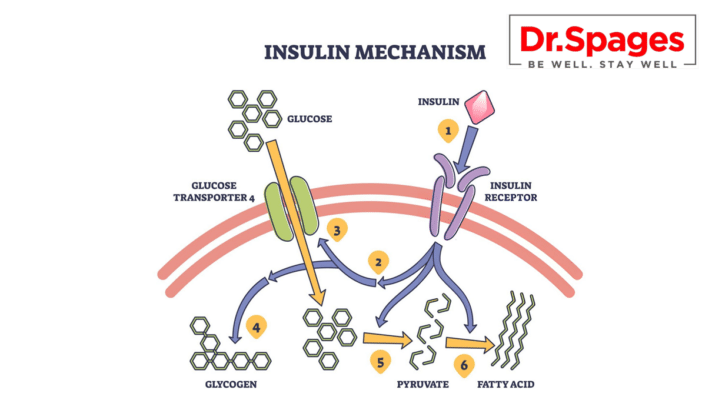The Role of Exercise in Promoting Beta Cell Function and Diabetes Reversal

The Role of Exercise in Promoting Beta Cell Function and Diabetes Reversal
Type 2 diabetes is a metabolic disorder characterized by insulin resistance and dysfunction of pancreatic beta cells, which are responsible for producing and secreting insulin. Exercise is a crucial component of diabetes management, as it helps to improve insulin sensitivity and enhance beta cell function. In this article, we will discuss the mechanisms through which exercise promotes beta cell function and diabetes reversal.
Mechanisms of Beta Cell Dysfunction in Diabetes
Beta cell dysfunction in diabetes can be attributed to several factors, including oxidative stress, inflammation, and mitochondrial dysfunction. Oxidative stress is caused by an imbalance between the production of reactive oxygen species (ROS) and the ability of the body to neutralize them. ROS can damage beta cell membranes and DNA, impair insulin secretion, and increase apoptosis of beta cells.
Inflammation is another key factor that contributes to beta cell dysfunction. Inflammatory cytokines such as interleukin-1β (IL-1β), tumor necrosis factor-α (TNF-α), and interferon-γ (IFN-γ) can impair insulin secretion, induce apoptosis of beta cells, and contribute to insulin resistance.
Mitochondrial dysfunction is also associated with beta cell dysfunction in diabetes. Mitochondria are responsible for producing energy in the form of ATP, and impaired mitochondrial function can result in reduced ATP production, oxidative stress, and beta cell dysfunction.
Role of Exercise in Promoting Beta Cell Function
Exercise has been shown to promote beta cell function and insulin sensitivity through several mechanisms. One of the primary mechanisms is the improvement of mitochondrial function. Exercise stimulates the biogenesis of new mitochondria and improves their function, leading to increased ATP production, reduced oxidative stress, and improved beta cell function.
Exercise also helps to reduce inflammation in the body, which can help to improve beta cell function. Exercise has been shown to reduce the production of pro-inflammatory cytokines such as IL-1β, TNF-α, and IFN-γ, and increase the production of anti-inflammatory cytokines such as IL-10.
In addition, exercise helps to improve insulin sensitivity by increasing the translocation of glucose transporters such as GLUT4 to the cell membrane. This allows glucose to enter the cell more efficiently, reducing the demand for insulin secretion from beta cells.
Furthermore, exercise has been shown to promote the survival of beta cells by reducing apoptosis. Exercise increases the production of anti-apoptotic proteins and reduces the production of pro-apoptotic proteins, leading to increased survival of beta cells.
Types of Exercise for Beta Cell Function
Various types of exercise can promote beta cell function and improve insulin sensitivity. Aerobic exercise, such as running, swimming, or cycling, has been shown to be effective in improving beta cell function and insulin sensitivity. Resistance exercise, such as weightlifting or bodyweight exercises, can also be effective in improving insulin sensitivity and promoting the growth of muscle tissue, which can help to improve glucose uptake.
High-intensity interval training (HIIT) is another effective type of exercise for improving beta cell function and insulin sensitivity. HIIT involves short bursts of high-intensity exercise followed by periods of rest or low-intensity exercise. This type of exercise has been shown to improve glucose uptake and mitochondrial function, leading to improved beta cell function.
Conclusion
Exercise is an effective tool for promoting beta cell function and improving insulin sensitivity in individuals with diabetes. The mechanisms through which exercise promotes beta cell function include improved mitochondrial function, reduced inflammation, improved insulin sensitivity, and reduced apoptosis. Various types of exercise, including aerobic exercise, resistance exercise, and HIIT, can be effective in promoting beta cell function. Exercise for some diabetics is NOT the best option but it based on labs. Incorporating regular exercise into a diabetes management plan can help individuals to improve glycemic control, reduce the risk of complications, and improve overall health and well-being.
Watch this video about “is exercise good for diabetics?”.
About Dr Spages
Dr. Jonathan Spages, DC is an expert in Functional Medicine, with a special focus on type II diabetes and hypothyroidism, along with other persistent illnesses, by addressing the underlying issues and treating the root cause of the problem. He offers customized plans and diets to reverse the effects of diabetes.
Unlike traditional medicine, which relies on medications and hormones to treat these diseases, Dr. Spages adopts a more comprehensive approach to care. He employs cutting-edge diagnostic testing and analysis techniques that are seldom used in conventional settings to detect the root causes of these conditions, enabling him to offer better treatment options.






???????? Excellent ????
Thanks